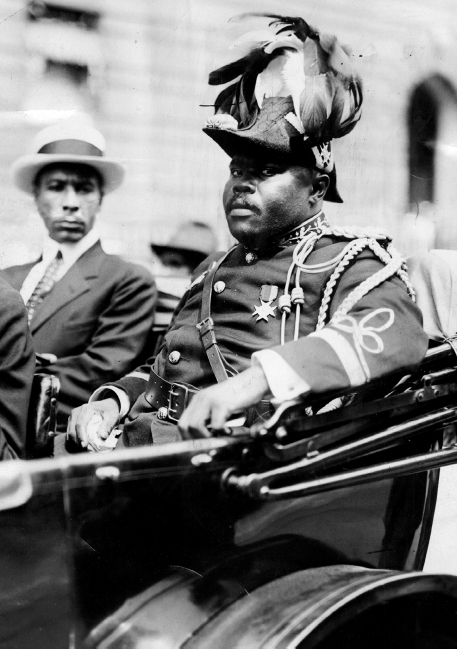Marcus Garvey and Black Nationalism

In addition to providing a fertile ground for African American intellectuals, Harlem became the headquarters of the most significant alternative black political vision of the 1920s. In 1916 the Jamaican-born Marcus Mosiah Garvey settled in Harlem and became the leading exponent of black nationalism. In 1914 Garvey had set up the Universal Negro Improvement Association (UNIA) in Jamaica, an organization through which he promoted racial separation and pride. Unlike the leaders of the NAACP, who sought equal access to American institutions and cooperation with whites, Garvey favored a “Back to Africa” movement that would ultimately repatriate many black Americans to their ancestral homelands on the African continent. Together with the indigenous black African majority, transplanted African Americans would help overthrow colonial rule and use their power to assist black people throughout the world.
Garvey’s appeal did not rely primarily on this utopian project. Instead, the UNIA concentrated on building the economic strength of black communities in the United States through self-help. In the pages of his newspaper, Negro World, Garvey promoted ventures such as his Black Star Line steamship company, established in 1919. After raising more than $200,000 in less than four months, the company acquired a fleet of three less-than-seaworthy ships on which it planned to transport passengers between the United States, the West Indies, and Africa. The UNIA’s companies opened up blue-collar and white-collar jobs to black men and women that were generally unavailable to them in white-owned firms.
In addition to offering an outlet for dreams of economic advancement, Garvey tapped into the racial discontent of African Americans for whom living in the United States had proven so difficult. He denounced what he saw as the accommodationist efforts of the NAACP and declared, “To be a Negro is no disgrace, but an honor, and we of the UNIA do not want to become white.” Indeed, he proclaimed “Black is Beautiful” and asserted that both God and Jesus were black. Ironically, the UNIA and D. C. Stephenson’s Klan agreed on the necessity of racial segregation, though Garvey never accepted the premise that blacks were inferior. Garvey dressed in a military uniform with a saber dangling from his belt and a plumed hat atop his head. His appeals to black manhood were also accompanied by a celebration of black womanhood. He set up the Black Cross Nurses, and his wife, Amy Jacques Garvey, went beyond her husband’s traditional notions of femininity to extol the accomplishments of black women in politics and culture. Garveyism became the first mass African American movement in U.S. history and was especially effective in recruiting working-class blacks. UNIA branches were established in thirty-eight states throughout the North and South and attracted some 500,000 members.
Given his ideas and outspokenness, Garvey soon made powerful enemies. Du Bois and fellow members of the NAACP despised him. The black socialist labor leader A. Philip Randolph, who saw the UNIA program as just another form of exploitative capitalism, labeled Garvey an “unquestioned fool and ignoramus.” Yet Garvey’s downfall came from his own business practices. Convicted in 1925 of mail fraud related to his Black Star Line, Garvey served two years in federal prison until President Coolidge commuted his term and had the Jamaican citizen deported. Garvey continued to carry on his activities from England, but without his presence the UNIA lost most of its following in the United States.
Review & Relate
|
How did new forms of entertainment challenge traditional morality and traditional gender roles? |
Describe the black cultural and intellectual renaissance that flourished in the 1920s. |